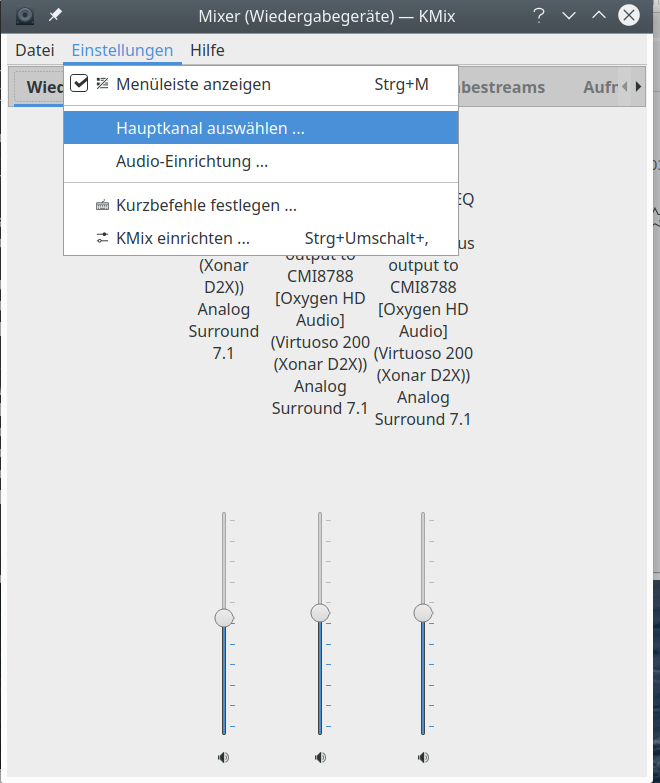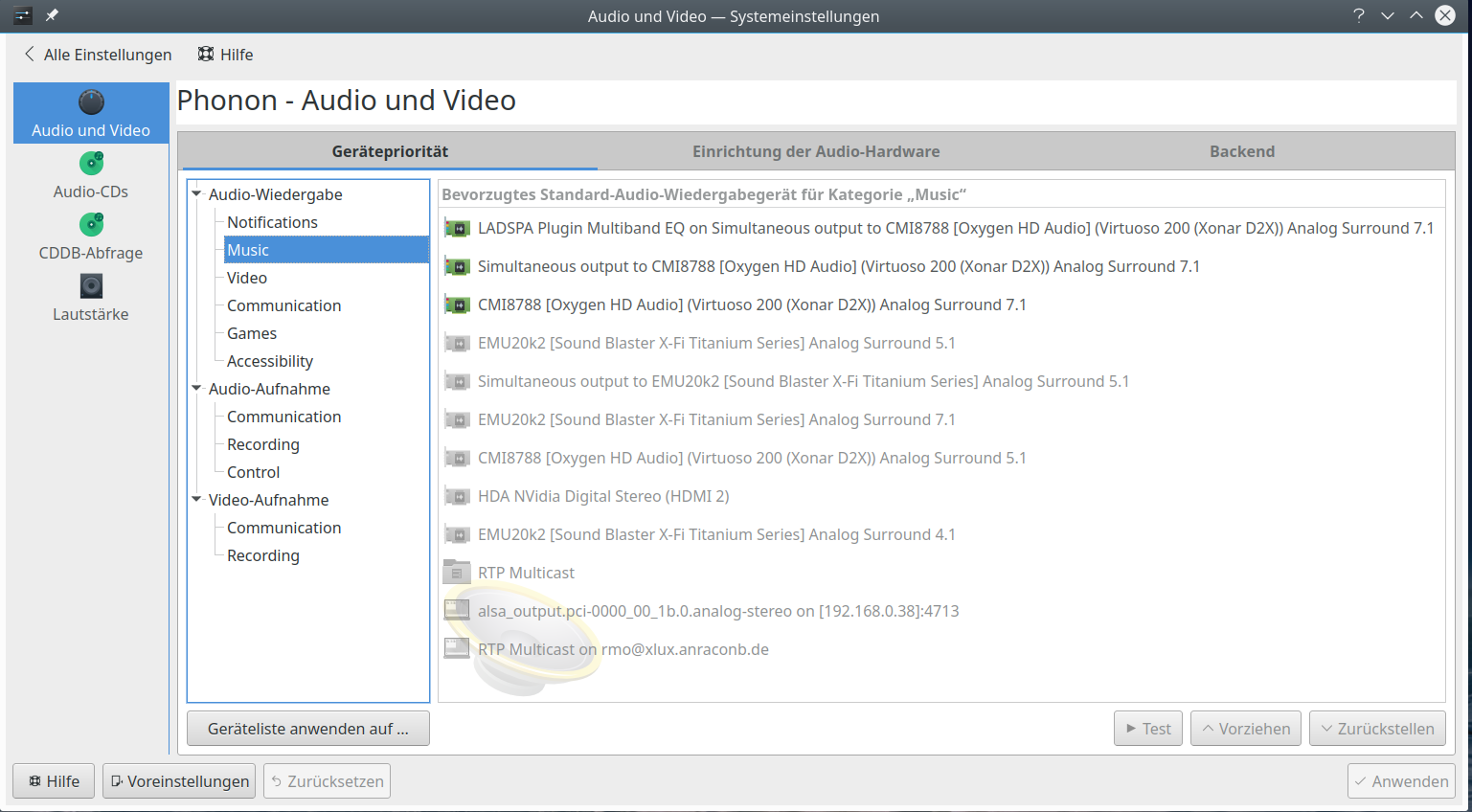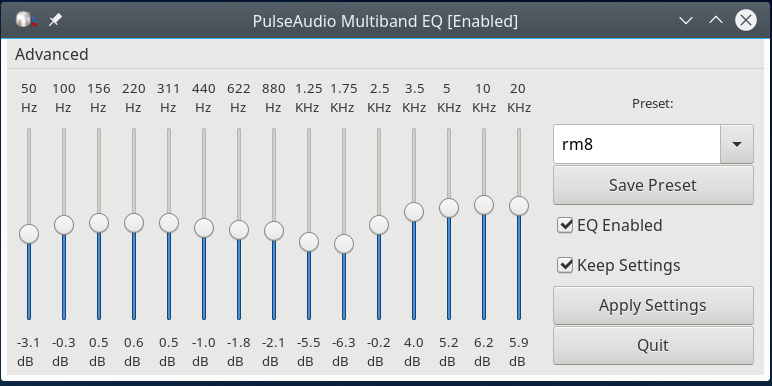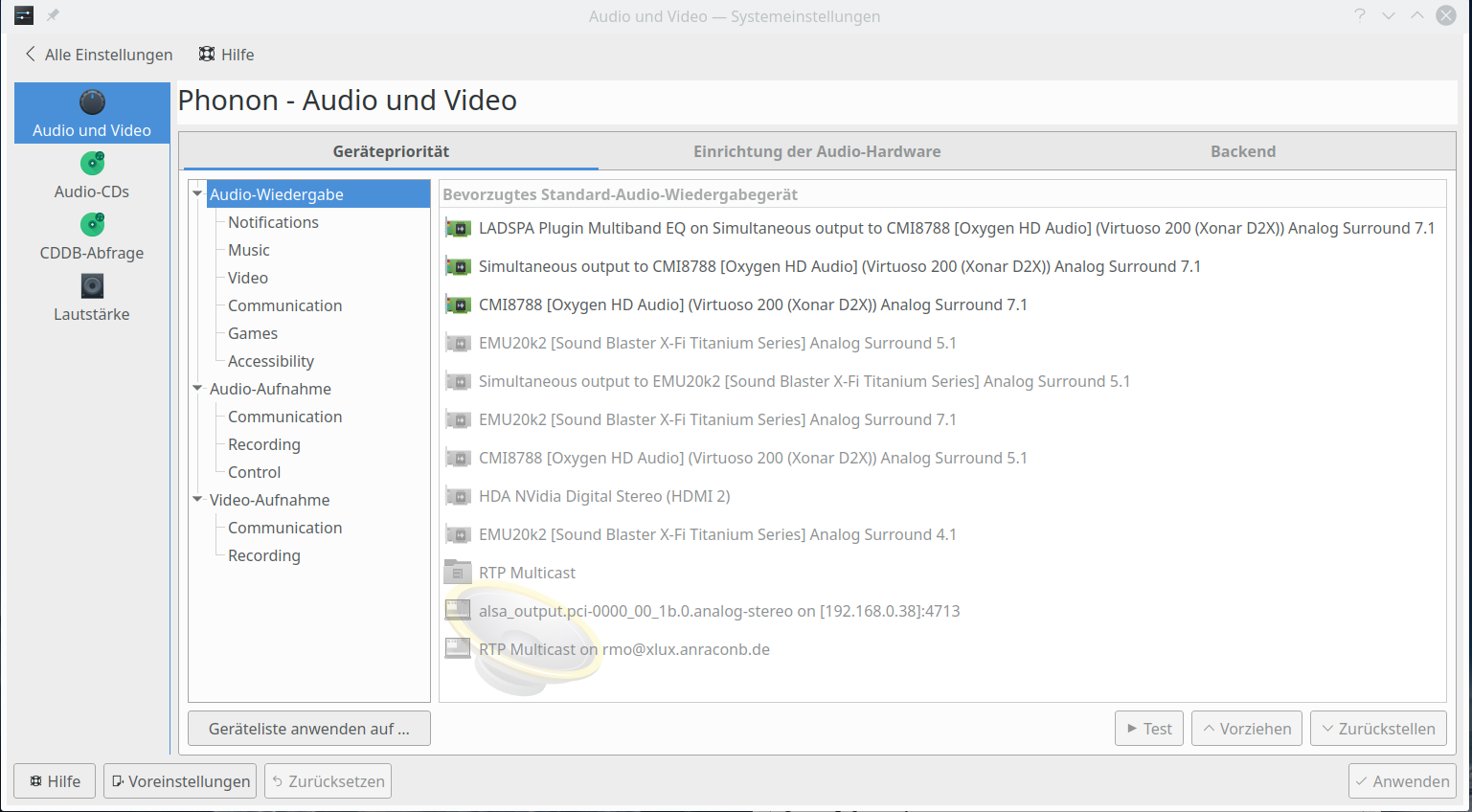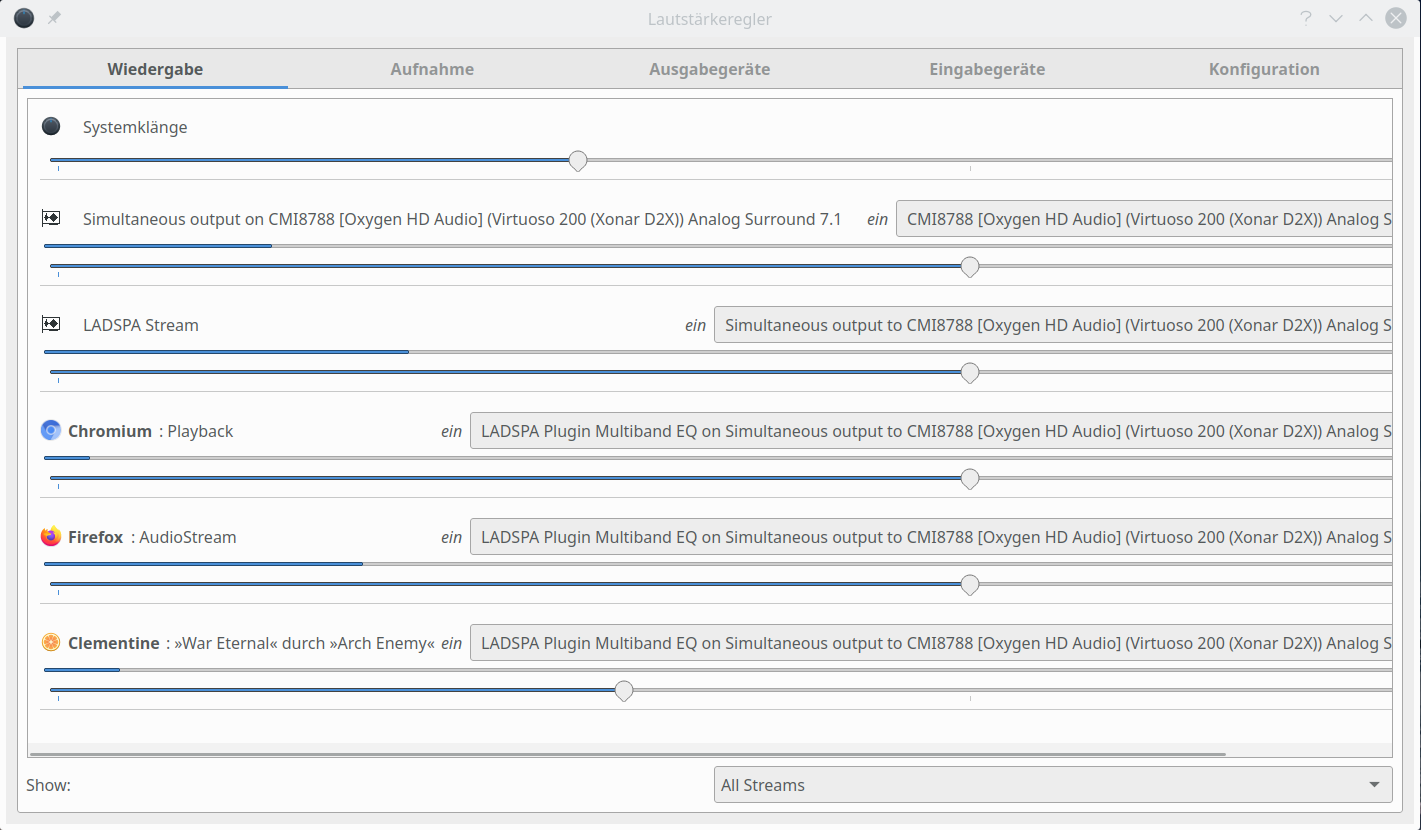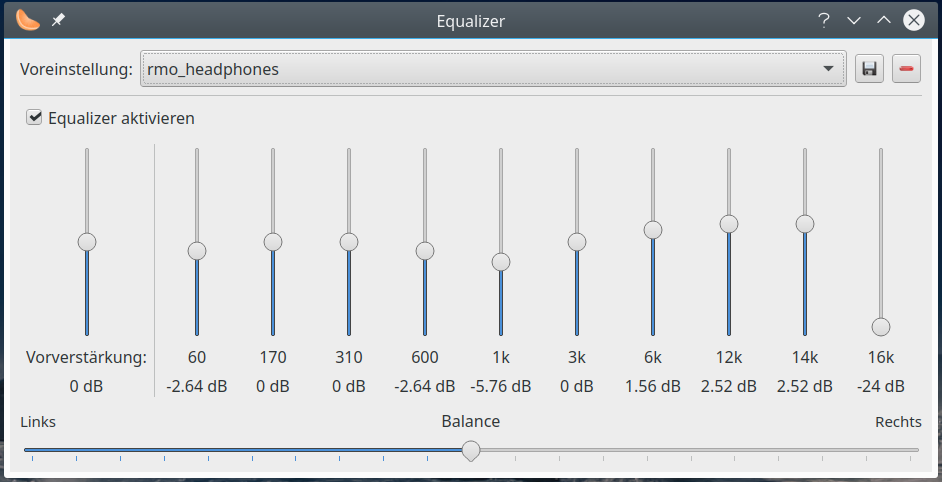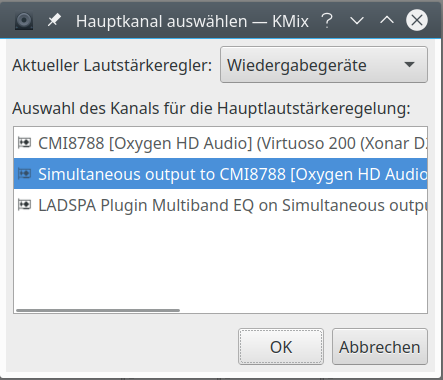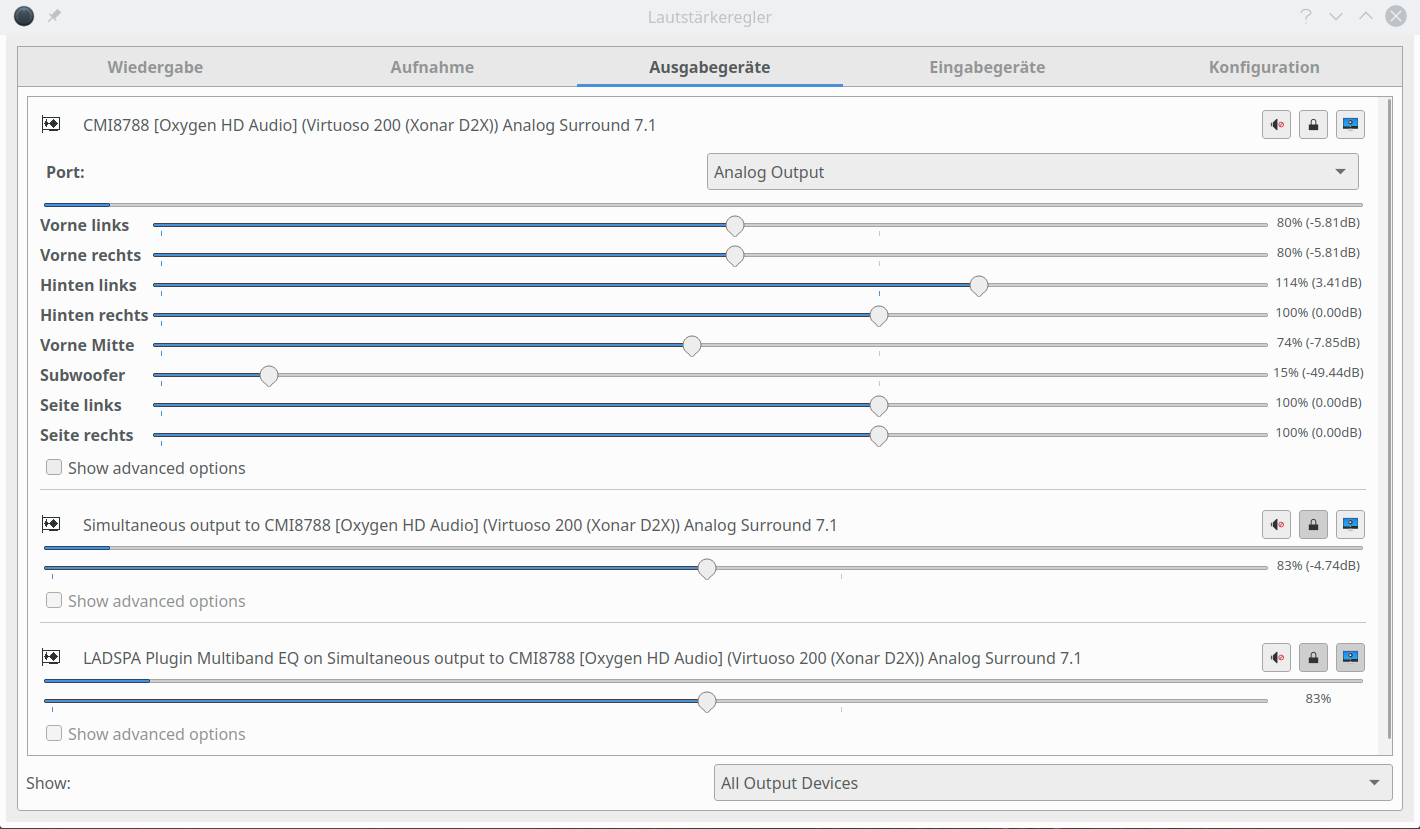In dieser Artikelserie beschäftigen wir uns damit, wie man von einer Linux-Umgebung aus direkt auf Partitionen von vmdk-Disk-Images zugreifen kann. In den letzten beiden Artikeln
Mounten eines vmdk Laufwerks im Linux Host – I – vmware-mount
Mounten eines vmdk-Laufwerks im Linux Host – II – Einschub, Spezifikation, Begriffe
hatten wir zunächst das Kommando “vmware-mount” betrachtet. “vmware-mount” kann Partitionen in Snapshots eines “sparse and growing vmdk-Images” direkt auf Zielverzeichnisse eines Linux-Baums mounten. Wir hatten dabei gesehen, dass zwischenzeitlich ein sog. “flat”-File angelegt wird. Die Rechtesetzung beim Mounten hatte uns noch nicht besonders gefallen. Da vmdk-Format unterschiedliche und komplexe Varianten von bedarfsgerecht wachsenden Images und Snapshots erlaubt, hatten wir im zweiten Artikel ein paar Seitenblicke auf die Spezifikation geworfen, um die Vielzahl von vmdk-Dateien zu einem Disk-Image und die zugehörige Nomenklatur besser zu verstehen. Nun wollen wir ein erstes natives Linux-Tools betrachten.
Da “vmdk” mit Virtualisierung zu tun hat, ist es kein Wunder, dass die beste Unterstützung für dieses Format unter Linux aus dem QEMU-Bereich – und damit von Red Hat und aufgekauften Firmen – kommt. Eines der Tools, auf die dabei inzwischen Verlass ist, gibt es schon sehr lange (seit etwa 2010): qemu-nbd.
nbd steht dabei für Network Block Device; Ziel des nbd-Toolsets war es, virtuelle Speichermedien auch über Server – also über Netz – für qemu-basierte virtuelle Maschinen auf Client-Systemen (z.B. Linux-Workstations) bereitzustellen. Schön beschrieben sind die Grundlagen aus den Anfangszeiten etwa hier :
Qemu-Buch zu Network Block Devices
https://de.wikipedia.org/wiki/Network_Block_Device
nbd kann aber natürlich auch lokal – also auf der eigenen Linux-Workstation – zur Erstellung eines Block-Devices auf Basis eines vmdk-Disk-Images eingesetzt werden. Das Kernelmodul “nbd” und das zugehörige CLI-Kommando “qemu-nbd” erweisen sich dabei als fähig, auch Snapshots des neuesten vmdk-Formats in der Version 6 richtig zu verarbeiten. Für die weitere Verwertung unter Linux werden – bei richtiger Parametrierung – ein oder mehrere ein Block-Devices erzeugt, die wir z.T. direkt mounten können.
Vorab ein paar mahnende Worte: vmdk, qcow2, etc. sind für virtuelle Maschinen gedacht. Gerade bei virtualisierten Windows-Maschinen, aber auch sonst, sollte man vorsichtig sein, wenn man nicht genau weiß, in welchem Zustand sich die Filesysteme des Images befinden. Ein manipuliertes Filesystem und/oder mit Malware behafteter Inhalt kann nach einem Mounten auch auf einem Linux-Host erheblichen Schaden anrichten. Leute, die etwas anderes glauben, erliegen einer Illusion.
Ich plädiere deshalb dafür, Experimente oder auch forensische Aktivitäten mit Partitionen aus vmdk-Images immer in einem virtuellen KVM-Linux-Gastsystem eines KVM-Hostes auszuführen. Das Gastsystem kann man hinreichend gut vom eigentlichen Virtualisierungs-Host isolieren. Die Performance ist auf aktuellen und SSD-basierten Systemen hinreichend gut, um auch mit großen vmdk-Images bequem hantieren zu können.
Wenn ich nachfolgend vom “Host” spreche, meine ich also immer das Linux-System, auf dem man mit dem vmdk-Image “forensisch” operiert – und nicht die virtuelle
Maschine, die das Image normalerweise direkt nutzt und auch nicht den Virtualisierungshost. Ich meine vielmehr einen speziellen KVM-Linux-Gast, von dem aus man auf das Image zugreift. Die zu untersuchenden vmdk-Dateien kann man auf einem solchen Gast z.B. über SSHFS bereitstellen – oder sie bei hinreichendem Platz einfach per scp in das Gast-Filesystem hineinkopieren.
Man lese zu den Gefahren etwa:
A reminder why you should never mount guest disk images on the host OS von D.P. Berrange
Zudem gilt immer:
Mehrfache Mounts mit ggf. konkurrierenden schreibenden Zugriffen sind unbedingt zu vermeiden! Operiert man mit dem Image entgegen meinem Ratschlag direkt auf dem Virtualisierungshost, so muss das virtualisierte Gastsystem, das das Image normalerweise nutzt, abgeschaltet sein. Oder: Man mountet zur Sicherheit in einem “read only”-Modus.
Wer sich unter Linux – in meinem Fall Opensuse Leap – mit qemu und KVM auseinandersetzt, hat die notwendigen Pakete mit ziemlicher Sicherheit bereits installiert. Erforderlich ist das Paket “qemu-tools” (unter Debian-Derivaten “qemu-utils”). Abhängigkeiten werden durch YaST (oder apt-get) aufgelöst. Unter Opensuse Leap ist das Paket bereits im Standard-Update-Repository enthalten; alternativ kann man auf das Virtualization Repository zurückgreifen.
qemu-nbd greift intern auf die Fähigkeiten von “qemu-img” zurück. Die Seite en.wikibooks.org-wiki-QEMU-Images informiert darüber, welche vmdk-Formate (neben vielen anderen Formaten) qemu-img in einer aktuellen Version (≥ 2.9) unterstützt:
vmdk:
VMware 3 & 4, or 6 image format, for exchanging images with that product
Das Interessante ist, dass qemu-nbd die vorgegebenen vmdk-Dateien zu Snapshots und zur vmdk-Base-Disk nach außen – also in Richtung Linux-User – zu einem Block-Device zusammenführt. qemu-nbd legt also einen Block-Layer über die komplexe vmdk-Adressierungsstruktur. Die Hauptarbeit leistet dabei ein Kernelmodul.
Drei Schritte sind notwendig, um zu dem gewünschten Block-Devices und darin enthaltenen Filesysteme zu mounten.
Schritt 1 – Kernel-Modul laden:
Zunächst muss das “nbd”-Kernel-Modul geladen werden. Die Seite “kernel.org-Documentation-zu-nb erläutert die möglichen Parameter. Dieselbe Info liefert natürlich auch “modinfo”:
mytux:~ # modinfo nbd
filename: /lib/modules/4.4.120-45-default/kernel/drivers/block/nbd.ko
license: GPL
description: Network Block Device
srcversion: 6F062B770FED9DC58072736
depends:
retpoline: Y
intree: Y
vermagic: 4.4.120-45-default SMP mod_unload modversions
signer: openSUSE Secure Boot Signkey
sig_key: 03:32:FA:9C:BF:0D:88:BF:21:92:4B:0D:E8:2A:09:A5:4D:5D:EF:C8
sig_hashalgo: sha256
parm: nbds_max:number of network block devices to initialize (default: 16) (int)
parm: max_part:number of partitions per device (default: 0) (int)
In meinem Testfall erwarte ich maximal 4 (NTFS/FAT-) Partitionen pro vmdk-Device, also:
mytux:/etc # modprobe nbd max-part=4
mytux:/etc #
Schritt 2 – nbd-Device wählen und mit dem Disk-Image verknüpfen:
Defaultmäßig hält Linux 15 potentielle nbd-Devices unter dem Verzeichnis “/dev” vor. Nun muss ein solches “nbd”-Block-Device natürlich noch mit einem Disk-Image
verbunden werden. Wurde das Device “/dev/nbdx” – alos z.B. “/dev/nbd0” – noch nicht anderweitig benutzt, können wir es mit einem Disk-Image mittels der “-c” (= –connect) Option des Kommandos “<strong>qemu-nbd</strong>” zusammenführen.
Vorher müssen wir ein geeignetes Image wählen. Leser meines letzten Artikels wissen, dass auf meinem (selbst virtualisierten) Linux-System ein Testverzeichnis mit Dateien eines Win7-Gastes einer VMware-Umgebung existiert. Das Verzeichnis beinhaltet u.a. den zweiten Snapshot eines growable, sparse vmdk-Disk-Images zu einer Disk “Win7_x64_ssdx”. Um es noch komplizierter zu machen, befinden sich die ursprüngliche Deskriptor-Datei und die zugehörigen Extent-Dateien (inkl. der ursprünglichen Basis-Datei) in einem anderen Verzeichnis “/vmw/Win7”.
Das Verzeichnis “/vmw/Win7Test/” beinhaltet dagegen die Delta-Dateien (Deskriptor und Extents):
mytux:/vmwssd_w7prod/Win7_x64 # la | grep ssdx
-rw------- 1 myself users 1507328 Mar 28 20:26 Win7_x64_ssdx-000001-s001.vmdk
-rw------- 1 myself users 65536 Mar 28 19:54 Win7_x64_ssdx-000001-s002.vmdk
-rw------- 1 myself users 370 Mar 28 20:24 Win7_x64_ssdx-000001.vmdk
-rw------- 1 myself users 851968 Mar 29 10:38 Win7_x64_ssdx-000002-s001.vmdk
-rw------- 1 myself users 65536 Mar 28 20:26 Win7_x64_ssdx-000002-s002.vmdk
-rw------- 1 myself users 10240 Mar 29 10:37 Win7_x64_ssdx-000002.vmdk
Die Verlinkung zu den Ursprungsdateien unter “/vmw/Win7”
mytux:/vmwssd_w7prod/Win7_x64 # la /vmw/Win7/ | grep ssdx
-rw------- 1 myself users 2344157184 Mar 28 19:53 Win7_x64_ssdx-s001.vmdk
-rw------- 1 myself users 131072 Mar 27 19:37 Win7_x64_ssdx-s002.vmdk
-rw------- 1 myself users 511 Mar 28 19:51 Win7_x64_ssdx.vmdk
ist, wie wir aus dem vorhergehenden Artikel wissen, natürlich über Verweise in den Deskriptor-Dateien Win7_x64_ssdx-000002.vmdk und Win7_x64_ssdx-000001.vmdk der Snapshots festgelegt.
Kommt qemu-nbd mit dieser komplexen Struktur klar? Ja – und wir müssen dabei nur die richtige Deskriptor-Datei angeben …
mytux:/vmw/Win7Test # qemu-nbd -c /dev/nbd0 Win7_x64_ssdx-000002.vmdk
mytux:/vmw/Win7Test # la /dev | grep nbd0
brw-rw---- 1 root disk 43, 0 Mar 30 14:51 nbd0
brw-rw---- 1 root disk 43, 1 Mar 30 14:51 nbd0p1
brw-rw---- 1 root disk 43, 2 Mar 30 14:51 nbd0p2
mytux:/vmw/Win7Test # fdisk -l /dev/nbd0
Disk /dev/nbd0: 4 GiB, 4294967296 bytes, 8388608 sectors
Units: sectors of 1 * 512 = 512 bytes
Sector size (logical/physical): 512 bytes / 512 bytes
I/O size (minimum/optimal): 512 bytes / 512 bytes
Disklabel type: dos
Disk identifier: 0x0efb9e3e
Device Boot Start End Sectors Size Id Type
/dev/nbd0p1 2048 5312511 5310464 2.5G 7 HPFS/NTFS/exFAT
/dev/nbd0p2 5312512 8384511 3072000 1.5G 7 HPFS/NTFS/exFAT
mytux:/vmw/Win7Test # #
Das, was hier so selbstverständlich aussieht, ist angesichts der Komplexität des vmdk-Formats eigentlich ein kleines Wunder. Man beachte, dass hier keine irgendwie geartete Kopie der vmdk-Disk in einem neuen Format erzeugt wurde. Vielmehr arbeiten wir auf den originalen Daten – deren Adressierung über eine Block-Layer-Schicht vermittelt wird. Dafür setzt qemu-nbd meines Wissens auch nicht FUSE ein (unix.stackexchange.com-questions-192875/qemu-nbd-vs-vdfuse-for-mounting-vdi-images)
Schritt 3 – Mounten:
So, wie wir qemu-nbd hier verwendet haben, ist es sehr zuvorkommend zu uns und weist neben dem Block-Device “/dev/nbd0” für die gesamte Disk gleich auch noch weitere Block-Devices für die intern erkannten Partitionen des Disk-Images aus. Letztere können wir direkt mounten:
nmytux:/vmw/Win7Test # mount /dev/nbd0p2 /mnt2
mytux:/vmw/Win7Test # la /mnt2
total 196128
drwxrwxrwx 1 root root 0 Mar 28 09:52 $RECYCLE.BIN
drwxrwxrwx 1 root root 4096 Mar 28 20:25 .
drwxr-xr-x 39 root root 4096 Mar 28 17:02 ..
drwxrwxrwx 1 root root 4096 Mar 28 09:53 Cosmological_Voids
drwxrwxrwx 1 root root 0 Mar 28 20:26 Muflons
drwxrwxrwx 1 root root 0 Mar 28 09:51 System Volume Information
-rwxrwxrwx 2 root root 200822784 Nov 4 2013 mysql-installer-community-5.6.14.0.msi
drwxrwxrwx 1 root root 0 Mar 29 10:37 ufos
Ähnlich wie bei “vmware-mount”, das wir im ersten Artikel dieser Serie behandelt hatten, bekommen wir je nach Zweck der vmdk-Untersuchung ggf. ein Problem mit Rechten – siehe die durchgehenden 777-Rechte-Kämme nach dem Mounten. Im Fall von qemu-nbd können wir das aber rechtzeitig im Zuge des Mountens korrigieren.
Dabei ist – je nach Untersuchungszweck – die Frage zu stellen: Wer soll welche Art von Zugriff erhalten und wie privilegiert soll derjenige sein? Ich zeige mal 2 Varianten. (Für das genauere Verständnis sollte man sich mit Mount-Optionen und umasks bzw. fmasks und dmasks befassen.)
Variante 1: Nur Root soll rein lesenden Zugang erhalten:
mytux:/vmw/Win7Test # mount -o uid=root,gid=root,umask=0277 /dev/nbd0p2 /mnt2
mytux:/vmw/Win7Test # la /mnt2
total 196128
dr-x------ 1 root root 0 Mar 28 09:52 $RECYCLE.BIN/
dr-x------ 1 root root 4096 Mar 28 20:25 ./
drwxr-xr-x 39 root root 4096 Mar 28 17:02 ../
dr-x------ 1 root root 4096 Mar 28 09:53 Cosmological_Voids/
dr-x------ 1 root root 0 Mar 28 20:26 Muflons/
dr-x------ 1 root root 0 Mar 28 09:51 System Volume Information/
-r-x------ 2 root root 200822784 Nov 4 2013 mysql-installer-community-5.6.14.0.msi*
dr-x------ 1 root root 0 Mar 29 10:37 ufos/
Variante 2: Nur der User “myself” soll lesenden und schreibenden Zugang zu Dateien und Directories des gemounteten NTFS-Systems erhalten:
mytux:/vmw/Win7Test # mount -o uid=rmx,gid=users,fmask=0177,dmask=0077 /dev/nbd0p2 /mnt2
mytux:/vmw/Win7Test # la /mnt2
total 196128
drwx------ 1 myself users 0 Mar 28 09:52 $RECYCLE.BIN
drwx------ 1 myself users 4096 Mar 28 20:25 .
drwxr-xr-x 39 root root 4096 Mar 28 17:02 ..
drwx------ 1 myself users 4096 Mar 28 09:53 Cosmological_Voids
drwx------ 1 myself users 0 Mar 28 20:26 Muflons
drwx------ 1 myself users 0 Mar 28 09:51 System Volume Information
-rw------- 2 myself users 200822784 Nov 4 2013 mysql-installer-community-5.6.14.0.msi
drwx------ 1 myself users 0 Mar 29 10:37 ufos
mytux:/vmw/Win7Test #
Die Linux-Rechte sagen allerdings wenig darüber aus, wem ggf. neu angelegte Dateien mit welchen Rechten dann später welchem User auf einem virtuellen Windows gehören würden. Siehe zu dieser Thematik den entsprechenden Abschnitt und zugehörige Links im ersten Artikel der Serie.
Nachdem man die Untersuchung einer Partition des vmdk-Disk-Images unter Linux abgeschlossen hat, muss man alles wieder rückgängig machen. Das geht wie folgt:
mytux:/vmw/Win7Test # umount /mnt2
mytux:/vmw/Win7Test # qemu-nbd -d /dev/nbd0
/dev/nbd0 disconnected
mytux:/vmw/Win7Test # rmmod nbd
mytux:/vmw/Win7Test #
Den umount-Befehl muss
man natürlich für alle ggf. gemounteten Partitionen absetzen.
nbd war deshalb sehr hilfsbereit, weil wir beim Laden des Kernelmoduls vorgegeben hatten, wieviele Partitionen maximal verwaltet werden sollen. Frage: Können wir die Partitionen auch anders bekommen, wenn wir etwa den Parameter des Kernelmoduls weglassen? Antwort: Ja, das geht.
Ich möchte zwei Varianten vorstellen, die sich nicht nur auf nbd-Devices, sondern in gleicher Weise auch auf raw- oder flat-Files, die man etwa als Output von “vmware-mount -f” erhalten würde, anwenden lassen.
Die erste Methode nutzt Loop-Devices. Loop- oder Loopback-Devices kennt der Linux-Anwender normalerweise im Zusammenhang mit mit der Nutzung von Filesystemen, die von Raw-Dateien beherbergt werden. Man vergisst dabei oft, dass sich Loop-Devices auch Block-Devices überstülpen lassen; die man-Page zu “losetup” sagt dazu:
DESCRIPTION
losetup is used to associate loop devices with regular files or block devices, to detach loop devices, and to query the status of a loop device.
Letztlich ist unter Linux/Unix halt alles ein File :-). Also:
mytux:/vmw/Win7Test # modprobe nbd
mytux:/vmw/Win7Test # qemu-nbd -c /dev/nbd0 Win7_x64_ssdx-000002.vmdk
mytux:/vmw/Win7Test # la /dev | grep nbd0
brw-rw---- 1 root disk 43, 0 Mar 31 15:19 nbd0
mytux:/vmw/Win7Test # fdisk -l /dev/nbd0
Disk /dev/nbd0: 4 GiB, 4294967296 bytes, 8388608 sectors
Units: sectors of 1 * 512 = 512 bytes
Sector size (logical/physical): 512 bytes / 512 bytes
I/O size (minimum/optimal): 512 bytes / 512 bytes
Disklabel type: dos
Disk identifier: 0x0efb9e3e
Device Boot Start End Sectors Size Id Type
/dev/nbd0p1 2048 5312511 5310464 2.5G 7 HPFS/NTFS/exFAT
/dev/nbd0p2 5312512 8384511 3072000 1.5G 7 HPFS/NTFS/exFAT
Nun müssen wir noch die Offsets der Partitionen in Bytes aus den Start und End-Sektoren berechnen:
Offset Partition 1: 2048 * 512 = 1048576
Offset Partition 2: 5312512 * 512 = 2720006144
Diese Offset-Positionen sind dann über die Option “-o” im losetup-Kommando anzugeben:
mytux:/vmw/Win7Test # losetup -o 1048576 /dev/loop1 /dev/nbd0
mytux:/vmw/Win7Test # losetup -o 2720006144 /dev/loop2 /dev/nbd0
mytux:/vmw/Win7Test # mount /dev/loop1 /mnt2
mytux:/vmw/Win7Test # mount /dev/loop2 /mnt3
mytux:/vmw/Win7Test # la /mnt2
total 8
drwxrwxrwx 1 root root 0 Mar 27 19:35 $RECYCLE.BIN
drwxrwxrwx 1 root root 4096 Mar 27 19:35 .
drwxr-xr-x 39 root root 4096 Mar 28 17:02 ..
drwxrwxrwx 1 root root 0 Mar 27 19:34 System Volume Information
mytux:/vmw/Win7Test # touch /mnt2/hallo.txt
mytux:/vmw/Win7Test # la /mnt2
total 8
drwxrwxrwx 1 root root 0 Mar 27 19:35 $RECYCLE.BIN
drwxrwxrwx 1 root root 4096 Mar 31 15:24 .
drwxr-xr-x 39 root root 4096 Mar 28 17:02 ..
drwxrwxrwx 1 root root 0 Mar 27 19:34 System Volume Information
-rwxrwxrwx 1 root root 0 Mar 31 15:24 hallo.txt
mytux:/vmw/Win7Test # la /mnt3
total 196128
drwxrwxrwx 1 root root 0 Mar 28 09:52 $RECYCLE.BIN
drwxrwxrwx 1 root root 4096 Mar 28 20:25 .
drwxr-xr-x 39 root root 4096 Mar 28 17:02 ..
drwxrwxrwx 1 root root 4096 Mar 28 09:53 Cosmological_Voids
drwxrwxrwx 1 root root 0 Mar 28 20:26 Muflons
drwxrwxrwx 1 root root 0 Mar 28 09:51 System Volume Information
-rwxrwxrwx 2 root root 200822784 Nov 4 2013 mysql-installer-community-5.6.14.0.msi
drwxrwxrwx 1 root root 0 Mar 31 14:02 ufos
mytux:/vmw/Win7Test #
mytux:/vmw/Win7Test # cat /mnt3/ufos/ufo.txt
Ufos are not real
mytux:/vmw/Win7Test #
Zurückdrehen können wir den gesamten Prozess wie folgt:
mytux:/vmw/Win7Test # umount /mnt3
mytux:/vmw/Win7Test # umount /mnt2
mytux:/vmw/Win7Test # losetup -d /dev/loop2
mytux:/vmw/Win7Test # losetup -d /dev/loop1
mytux:/vmw/Win7Test # qemu-nbd -d /dev/nbd0
/dev/nbd0 disconnected
mytux:/vmw/Win7Test # modprobe -r nbd
mytux:/vmw/Win7Test #
Loop-Devices und “vmware-mount -f”
Das Ganze klappt natürlich auch mit “vmware-mount -f” und dem dadurch erzeugten “flat”-File (s. den ersten Artikel):
mytux:/vmw/Win7Test # vmware-mount -f Win7_x64_ssdx-000002.vmdk /mnt/vmdk
mytux:/vmw/Win7Test # la /mnt/vmdk
total 4194304
-rw------- 1 myself users 4294967296 Mar 31 15:25 flat
mytux:/vmw/Win7Test # losetup -o 2720006144 /dev/loop2 /mnt/vmdk/flat
mytux:/vmw/Win7Test # mount /dev/loop2 /mnt3
mytux:/vmw/Win7Test # cat /mnt3/ufos/ufo.txt
Ufos are not real
mytux:/vmw/Win7Test # umount /mnt3
mytux:/vmw/Win7Test # losetup -d /dev/loop2
mytux:/vmw/Win7Test # vmware-mount -d /mnt/vmdk
mytux:/vmw/Win7Test #
Über diesen Weg können wir übrigens auch das Problem mit den Zugriffsrechten lösen, dass wir im ersten Artikel für “vmware_mount” angesprochen hatten – wir legen die Rechte analog zum oben besprochenen Vorgehen im Zuge des mount-Befehls fest.
Erfahrene Linux-User wissen, dass kpartx ein nettes Tool ist, das aus Block-Devices oder Raw-Files evtl. enthaltene Partitionstabellen ermittelt und über “/dev/mapper” entsprechende Devices bereitstellt. Das funktioniert natürlich auch auf Basis von “/dev/nbdX”-Devices:
mytux:/vmw/Win7Test # modprobe nbd
mytux:/vmw/Win7Test # qemu-nbd -c /dev/nbd0 Win7_x64_ssdx-000002.vmdk
mytux:/vmw/Win7Test # kpartx -av /dev/nbd0
add map nbd0p1 (254:12): 0 5310464 linear 43:0 2048
add map nbd0p2 (254:13): 0 3072000 linear 43:0 5312512
mytux:/vmw/Win7Test # la /dev/mapper | grep nbd0
lrwxrwxrwx 1 root root 8 Mar 31 15:58 nbd0p1 -> ../dm-12
lrwxrwxrwx 1 root root 8 Mar 31 15:53 nbd0p2 -> ../dm-13
mytux:/vmw/Win7Test # mount /dev/dm-13 /mnt3
mytux:/vmw/Win7Test # cat /mnt3/ufos/ufo.txt
Ufos are not real
mytux:/vmw/Win7Test # umount /mnt3
mytux:/vmw/Win7Test # kpartx -d /dev/nbd0
mytux:/vmw/Win7Test # la /dev/mapper | grep nbd0
mytux:/vmw/Win7Test # modprobe -r nbd
mytux:/vmw/Win7Test #
Analog für ein flat-File von vmware-mount:
mytux:/vmw/Win7Test # vmware-mount -f Win7_x64_ssdx-000002.vmdk /mnt/vmdk
mytux:/vmw/Win7Test # kpartx -av /mnt/vmdk/flat
add map loop0p1 (254:12): 0 5310464 linear 7:0 2048
add map loop0p2 (254:13): 0 3072000 linear 7:0 5312512
mytux:/vmw/Win7Test # mount /dev/dm-13 /mnt3
mytux:/vmw/Win7Test # cat /mnt3/ufos/ufo.txt
Ufos are not real
mytux:/vmw/Win7Test # umount /mnt3
mytux:/vmw/Win7Test # kpartx -d /mnt/vmdk/flat
loop deleted : /dev/loop0
mytux:/vmw/Win7Test # vmware-mount -d /mnt/vmdk
mytux:/vmw/Win7Test #
Alles gut !
In allen oben dargestellten Beispielen haben wir bislang durchgehend rw-Mounts durchgeführt. Da ist bei vielen Analysen nicht erwünscht. Grundsätzlich ist im Umgang mit Partitionen regelmäßig Vorsicht angebracht, um nichts zu zerstören. Write-´Zugriffe sollte man immer zuerst auf Kopien testen.
Daher stellt sich die Frage nach einer “ro”-Option von “qemu-nbd”. Die gibt es, sie lautet “-r”. Deren Setzung schlägt auf alle weiteren Maßnahmen durch:
mytux:/vmw/Win7Test # modprobe nbd max-part=4
mytux:/vmw/Win7Test # qemu-nbd -r -c /dev/nbd0 Win7_x64_ssdx-000002.vmdk
mytux:/vmw/Win7Test # mount /dev/nbd0p2 /mnt3
fuse: mount failed: Permission denied
mytux:/vmw/Win7Test # mount -o ro /dev/nbd0p2 /mnt3
mytux:/vmw/Win7Test #
Ehrlich gesagt: keine Ahnung. Wenn es ein aktuelles Limit gibt, würde ich aufgrund älterer Infos im Zusammenhang mit nbd auf 1TB tippen. Wenn jemand was Genaueres weiß, kann er mir ja eine Mail schreiben. Siehe auch:
vsphere-50 und vddk
vddk51_programming.pdf
Das nbd-Kernelmodul und das Kommando qemu-nbd eröffnen relativ einfache Zugänge zu komplexen vmdk-Image-Dateien. Dabei wird auch die aktuelle Version 6 des vmdk-Formats beherrscht. Wir haben zudem die Möglichkeit, das Mounten der bereitgestellten nbd-Block-Devices bzgl. der Rechte individuell zu gestalten.
Im nächsten Artikel
Mounten eines vmdk-Laufwerks im Linux Host – IV – guestmount, virt-filesystems, qemu-img
gehe ich kurz auf “qemu-img” ein und betrachte dann das Kommando “guestmount” aus der neueren und Fuse-basierten Toolkiste von “libguestfs”.
losetup – Abkürzung für bestimmte mknod-Operationen zur Nutzung von Loop-Devices
unix.stackexchange.com/questions/98742/how-to-add-more-dev-loop-devices-on-fedora-19
qemu-nbd
https://wiki.ubuntuusers.de/QEMU/
https://opsech.io/posts/2017/Jun/07/how-to-mount-vm-disk-images-on-fedora.html
http://blog.vmsplice.net/2011/02/how-to-access-virtual-machine-image.html
https://sweetcode.io/introduction-to-linux-network-block-devices/
